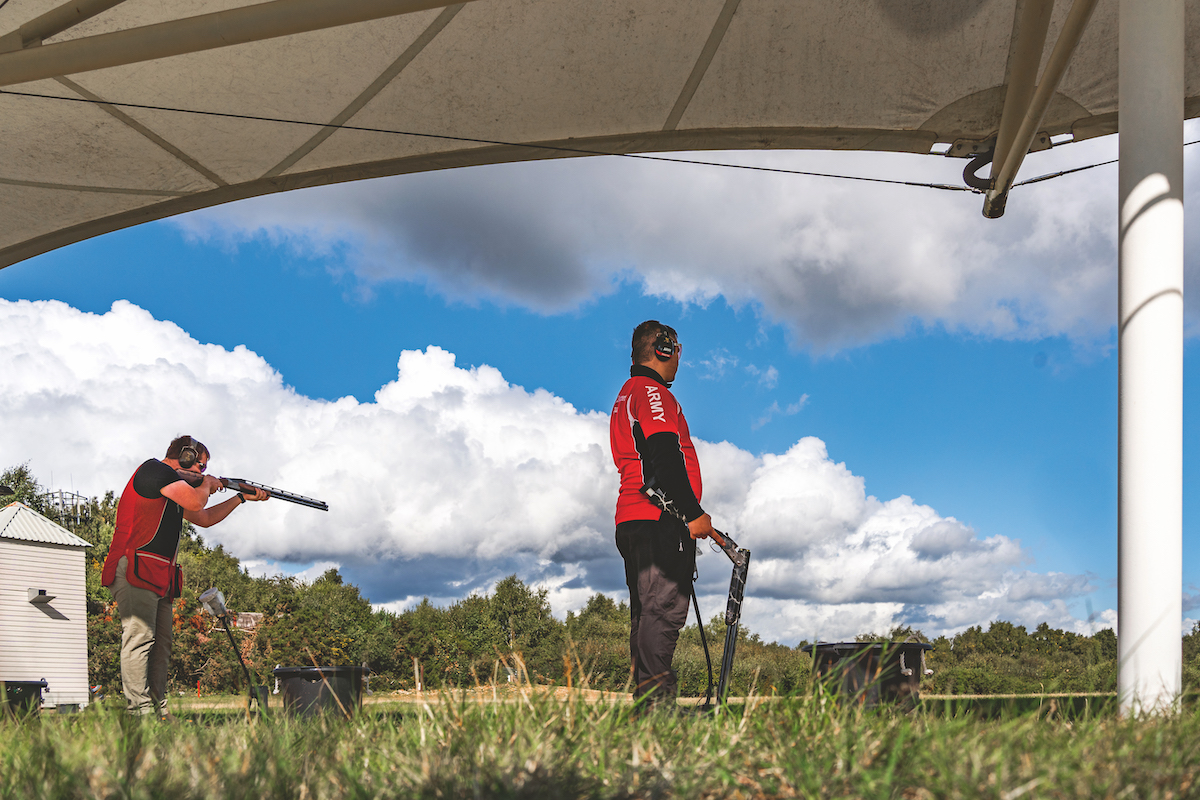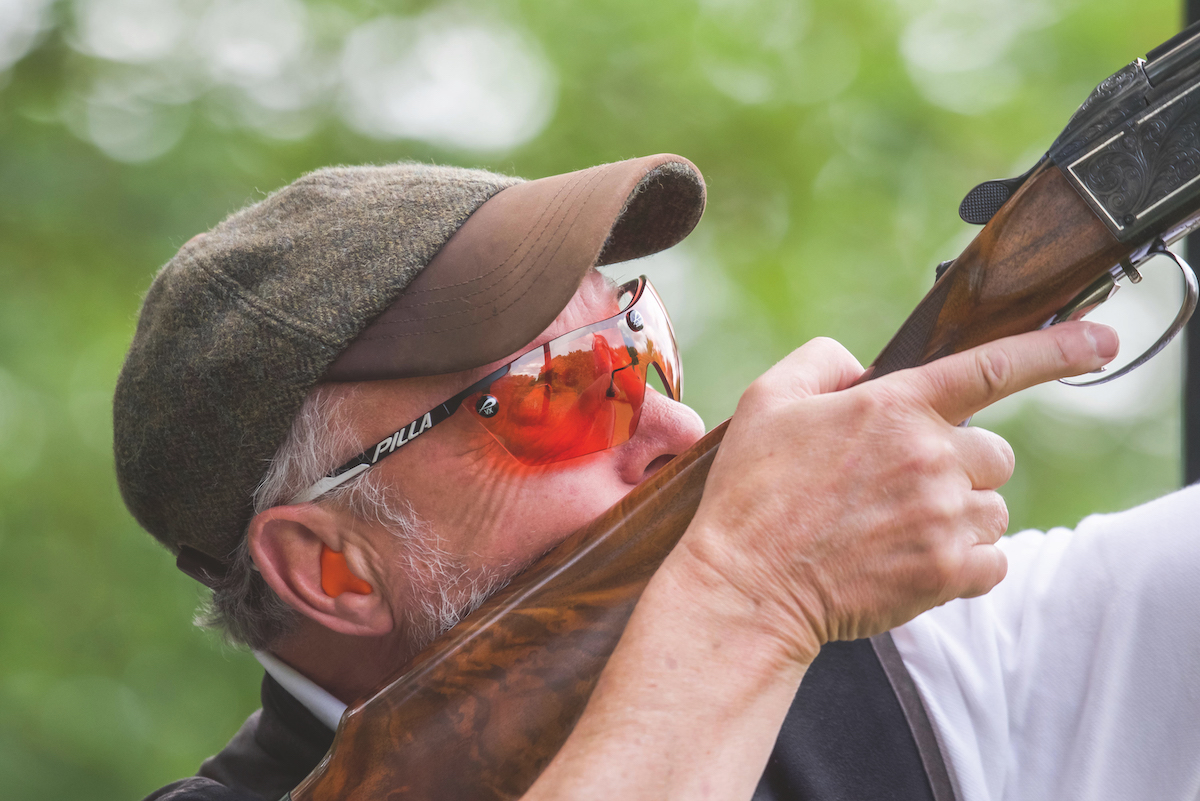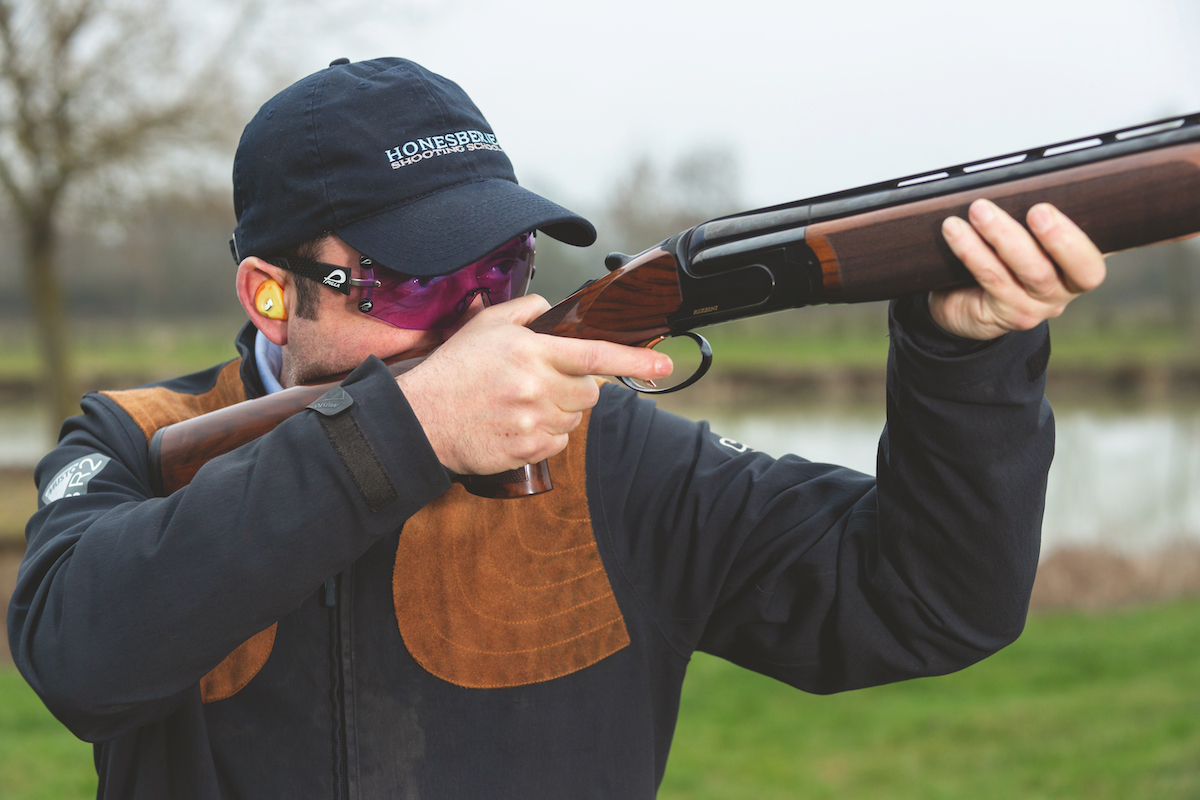Gun mount technique: beginner’s guide to clay shooting
You can’t expect to improve your scores until you can get your gun mount technique right every time, as James Marchington explains.
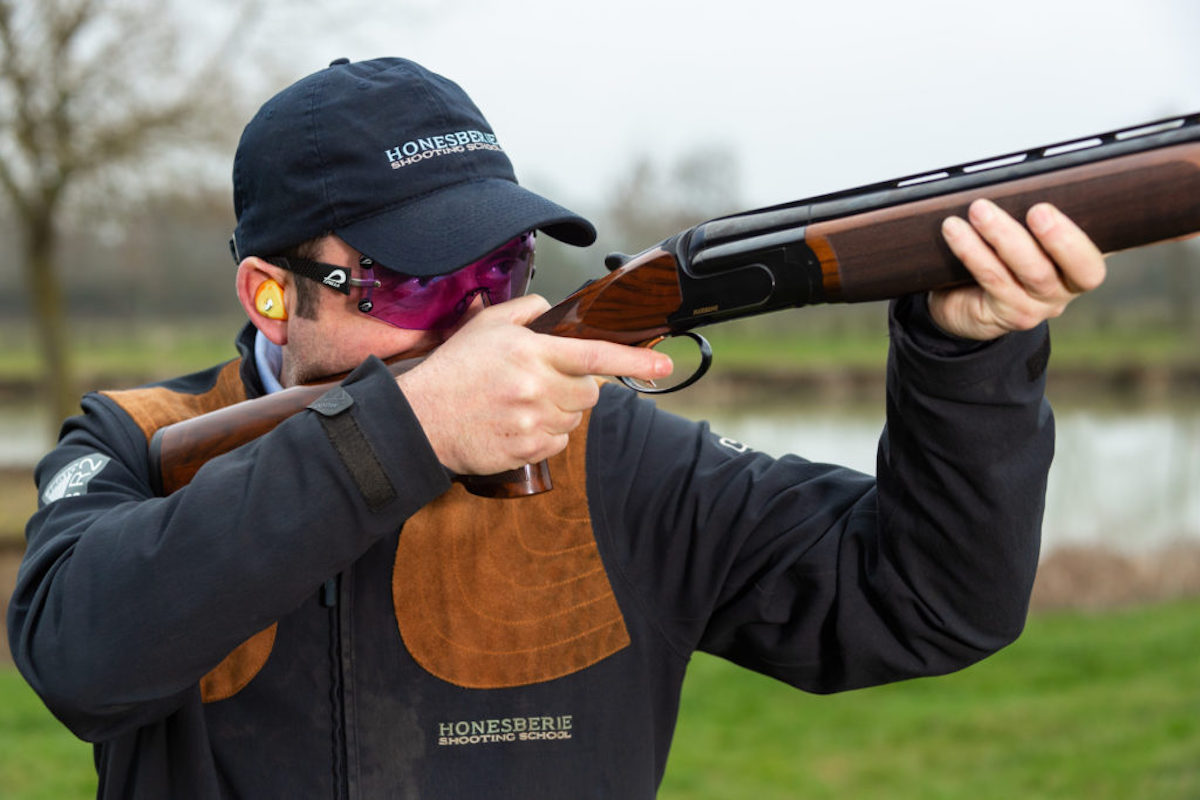
Gun mount technique must be mastered to improve your scores
You hear a lot about gun mount technique, and for good reason. It’s vital that you mount a shotgun correctly, otherwise a miss is almost guaranteed – the gun won’t be pointing where you’re looking.
Not only that, you need to mount the gun consistently every time if you’re going to improve your shooting and build decent scores. So let’s look at what gun mount technique is all about, and how you can get it right – not once, but time after time. (Exercises to improve your gun mount.)
The key point to remember is that when you raise the gun to shoot, the barrels end up pointing where you are looking. With a rifle you would line up the front and back sights with the target, guaranteeing that the barrel was pointing at the target.
That’s fine for a static shot at a stationary target, but shotgun shooting is a dynamic sport. We don’t want to be looking at the barrels or rib, we need to concentrate on the target. So a shotgun doesn’t have a rearsight, and only a small bead at the end of the barrel.
Rearsight position
In effect your eye becomes the rearsight, and just like a rifle the position of the rearsight is crucial. Too high and you’ll shoot over the top of the target; off-centre to left or right and you’ll miss to the side.
What determines the position of your eye is the shape of the stock and how you bring it to your face when you mount the gun. Note that I’m talking about bringing the comb of the stock to your cheek here.
How to mount the gun
People talk about bringing the gun to the shoulder, but that’s focusing on the wrong end of things. What really matters is that you bring the stock into the angle of your cheek in exactly the same way, time after time, so your eye is looking straight along the rib, past the bead to the target.
An instructor will check this by looking along the rib from the muzzle end to see where your eye is positioned. This procedure can look horribly dangerous, but it’s standard practice and of course there are strict safety rules that are followed to ensure that the gun is not loaded.
The instructor opens the gun first, checks the barrels are clear, then closes it and hands it over safe in the knowledge it cannot fire.
The instructor will then indicate one of his eyes and ask you to mount the gun pointing at that eye. Looking down the barrels, he can immediately see whether or not your eye is properly aligned with the rib.
The pupil of your eye should be precisely in line left-to-right, and sitting slightly above the rib vertically – the picture he’s looking for is a little like a bowling ball nicely in the middle at the far end of a bowling lane.
If you mount the gun like that then the gun will shoot where you’re looking, which means that you’re well on the way to hitting the target!
Other checks
The instructor is looking at other aspects of your gun mount too, of course, He’ll want to see that your head is held straight, not tilted over sideways to push your cheek down onto the comb. Your hand should be comfortably around the grip, without the wrist being uncomfortably cocked or the elbow awkwardly high.
The butt of the stock should fall into the ‘pocket’ of your shoulder, not mounted out on the shoulder joint itself or, worse still, on the upper part of the arm.
Thinking about the vertical position of the butt, it needs to be in full contact with your body, from the ‘heel’ to the ‘toe’. Often, you’ll see shooters mount the gun and the heel of the stock is sticking up above the shoulder.
They may be looking nicely along the rib, and hitting targets perfectly well, but they will suffer far more with recoil because the force is concentrated on just part of the butt, not being evenly distributed across its surface – it’s the same principle that causes stiletto heels to make dents in a wooden floor, with the force concentrated on a small area rather than being spread out.
It’s impossible to think about gun mount without considering gun fit. We are not all the same shape and size, after all. Some of us have long necks, others shorter; our shoulders will slope to different degrees; we may have high or low cheekbones, long or short arms, and soon. (Read more on gun fit here.)
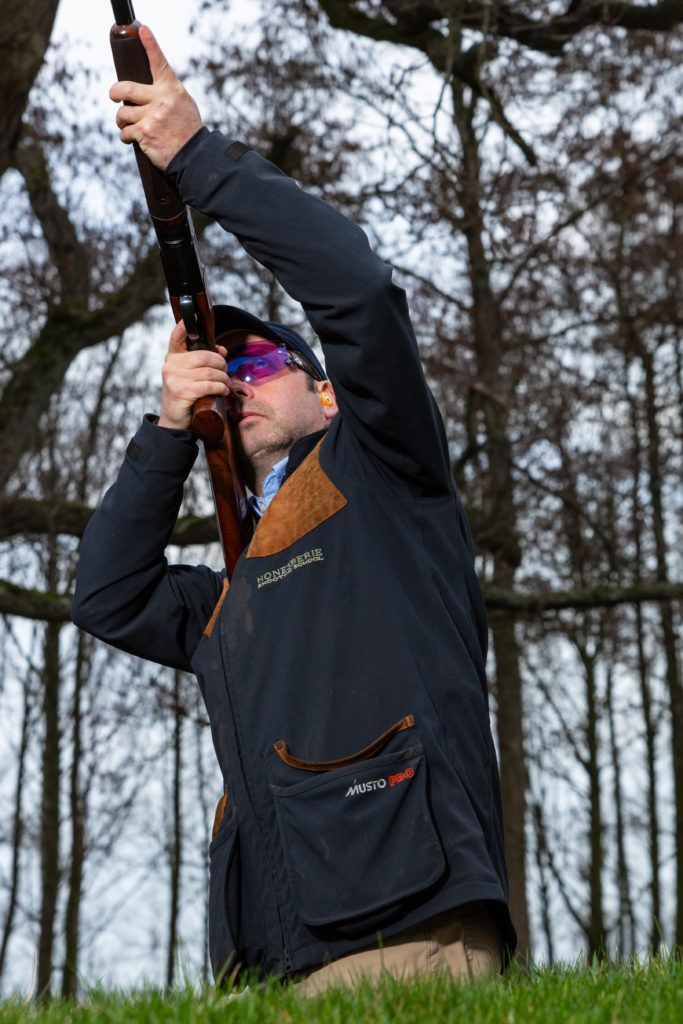
A good mount and a gun that fits you properly are vital if you’re going to perform consistently well
The permutations are almost endless, and no manufacturer can possibly make a gun that fits everyone. Most guns are a good ‘average’, and will be a reasonably good fit for most people, but you’ll be very lucky if you find one that fits you perfectly.
Ideally you will have your gun’s fit checked by an expert, and altered if necessary. This is better than adjusting your mount to make allowance for a gun that doesn’t fit you. It’s a good argument for buying a gun that allows a degree of adjustment without expensive alterations.
Many guns nowadays come with an adjustable comb which can be raised or lowered, and moved left and right, simply by loosening a bolt in the back of the stock. The gun may also have interchangeable butt-pads or spacers of different sizes, allowing you to alter the length of the stock.
All this allows you to refine the fit so your gun and mount work in harmony – you mount the gun naturally and comfortably, and it just falls into place with your eye perfectly aligned with the rib, your cheek gently against the comb and the butt neatly into the shoulder pocket.
There’s a bit of a chicken and egg situation here though. Any instructor will tell you that it’s impossible to fit a gun to someone who cannot mount the gun consistently and well.
And how are you going to do that if your gun doesn’t fit? The answer lies in finding a gun that is ‘good enough’ – a nearly perfect fit that you can use to develop your technique and build a good, consistent gun mount. (Read our guide to choosing the best clay gun for you.)
Practising your gun mount
You don’t even need to visit the shooting ground to practice your gun mount. Following strict safety procedures of course, you can do it in front of a mirror at home.
That will give you the same view of your eye on the rib that the instructor sees, so you can check that your mount is correct – and work on bringing the gun up to the same position time after time. Try closing your eyes and mounting by feel, then open them to discover whether you got it right.
Over time you will develop that ‘muscle memory’ that provides a good consistent mount, one of the fundamentals of consistent shooting.
Just make sure you visit your instructor regularly so you’re practising the right mount, rather than training your body to repeat the same mistake over and over again!

